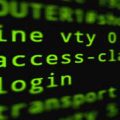Ports are logical channels that devices use to identify a type of traffic.
If you can imagine that you and I have a 10 meter cable, that has 10,000 wires running through it, and I take 2 of the wires and attach them into the ends of a battery, and you choose 2 wires on your end and attach them to a small light bulb. What chance have we got that my battery causes your light to glow?
However, what if I told you that I was using the green wire for the positive and the blue wire for the negative. If you took the same wires and attached them to your light bulb now we would have success.
In the same way, devices on our networks also select ports for different types of connections and different types of applications. The difference with port selection, is that these ports are logical and do not represent a physical wire at all.
If we look at surfing the web for example, when you open up your browser and type in an address of a website like www.aoip.org , your browser tries to make a connection to our website using a protocol called HTTP. HTTP uses port 80 to communicate, and if our server is not listening to port 80, the webpage’s would not open.
If you were to download a file off the internet using the FTP (File Transfer Protocol), you would be using port 20 and 21.
Below are a list of ports that are worthwhile knowing by memory, not to say these are the only ports you need to know, but it’s certainly a good start.
20 – FTP Data
21 – FTP Authentication
23 – Telnet
25 – SMTP (Simple Message Transport Protocol)
53 – DNS (Domain Name Service)
80 – HTTP (Hyper Text Transport Protocol)
110 – POP3 (Post Office Protocol)
443 – SSL / HTTPS (Security Socket Layer)
If you are running a Microsoft Windows computer, you can have a look at file that your computer uses when it boots to learn the port numbers needed for certain protocols and applications. You can find this file in the ‘Windows root folder – System32 – Drivers – etc’ the file is called ‘Services’ You can open this with Notepad or WordPad and have a look at what your machine is learning about during the boot-up phase.
It’s also worth noting, that as a general rule of thumb, any port numbers below 1024 are for International Specifications, and the products are not owned by anyone. Any port numbers from 1024 up to 65,535 are Vendor based, and the owner of the product has registered his product with the IANA for its use. There is of course exceptions to this rule… if you open the services file on your computer, have a look at port 666. It’s owned by the company ID Software, and used by the Game DOOM.




One thought on “Ports and their use.”
very useful……,thanks